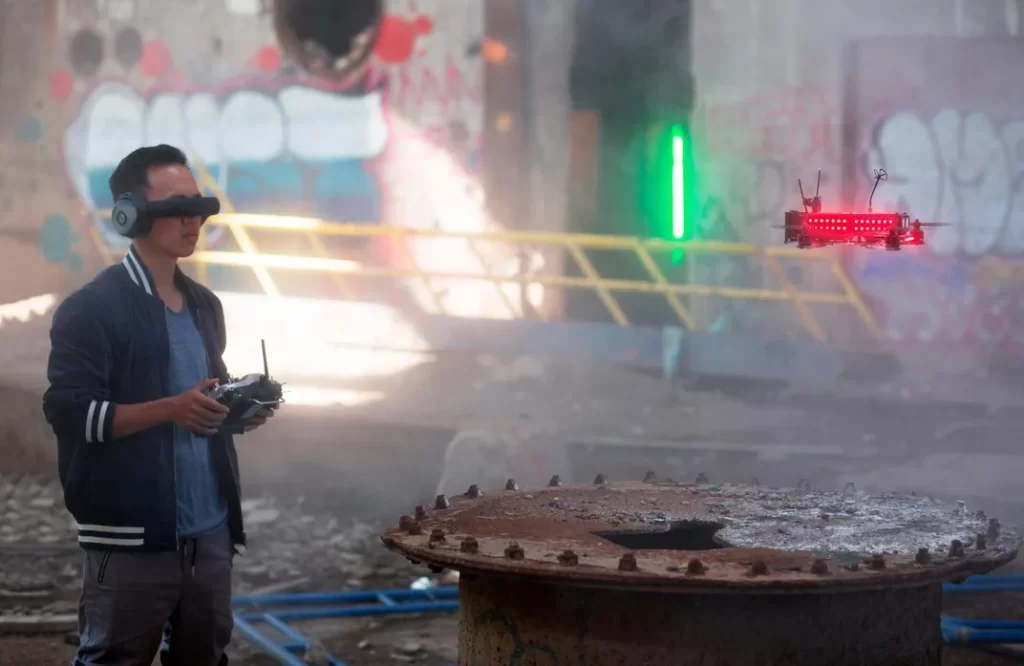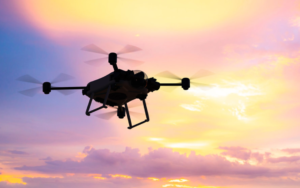
Contact
Andrew Staub, KC1OKI
[email protected]
His 2023 FPV drone presentation deck to the Newport County Radio Club will be posted here soon.
Bio: Andrew, KC1OKI first got his Amateur Rado Technician license to build and race his own FPV drones. As both an amateur radio enthusiast and lawyer, he looks forward to sharing his persectives and skill building tips on this defining 21st c. technology.
Nancy Austin, KC1NEK
RI Section Manager
[email protected]
Introduction
First Person View (FPV) drone racing took off a decade ago with this now-famous video of remote controlled tiny drones flying through the maze of a French forest.
Some see FPV racing is the sport of the future as argued here:
“Drone sports, or FPV, is the only sport that combines the virtual world with physical reality. Where the rider controls the plane wirelessly, using virtual reality glasses to see the plane’s perspective as if he is controlling from inside the plane, with the basic information of flight emerging from the plane and battery settings. And the rider uses this information to achieve the best flying style. These aircraft may exceed 120 kilometers per hour in maneuvers that are almost counter to the mind and physics. … FPV started as a hobby and way of entertainment and turned into racing and competition, and many people use it for cinematography, especially in photography that needs high speed chases.
Drone racing is at the forefront of competitions in which technology and wit are combined. It is considered the cradle of future technology, given that the future revolves around drones and the various services they provide. These competitions are characterized by constant changes and challenges. It relies on continuous research and development to reach the best performance and the best equation between speed, weight and battery. For this reason, universities, schools and even countries compete to put a distinctive imprint in this field.”
Is a Ham Radio License Needed When Flying FPV?
The quick answer to this question is, yes,
Amateur Radio (Technician) Frequencies include:
Control link transmitter frequencies
27MHz, 72MHz, 433MHz, 900MHz, 1.3GHz and 2.4GhzVideo transmitter frequencies
1.3 GHz, 5.8 GHz
STEM Learning
Drones in School team building links:
Low Latency Analog Video: From Amateur Fast Scan TV to emerging Analog/Hybrid Protocols
https://www.arrl.org/atv-fast-scan-amateur-television
ExpressLRS – new High Performance Open Source Radio Control Link
Drones, of course, include more than FPV racing.
Unmanned vehicles (UAV) offer new ways to explore the air, sea, and interior spaces. Find out more about the Amateur Radio Technician license requirements to legally pilot these devices under what conditions, and workforce opportunities these skills can lead to.
Hear from RI hams who build their own racing drones. Use drones in their job protecting the ocean. Teach the next generation of Amateur Radio drone / UAV operators. Support Emergency Management teams. And more.
Drone (sUAS) Certificate Program

Did you know?
Bridgewater State University in nearby Massachusetts “will not only prepare students for the FAA Part 107 exam but students will learn numerous aspects of flying Small Unmanned Aviation Systems (sUAS). The curriculum will feature information about the various software used in piloting UAVs, drone maintenance, how to build UAV parts using a 3D scanner and aspects of engaging drone scanners and imaging. Students will also learn how to utilize GIS (Geographical Information Services) mapping 2D and 3D mapping.
BSU’s program will also prepare students for the business side of sUAS. Students will prepare business plans to create their own drone company.

